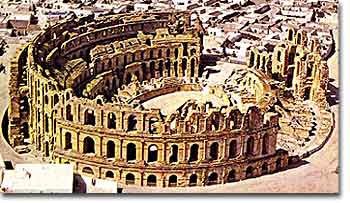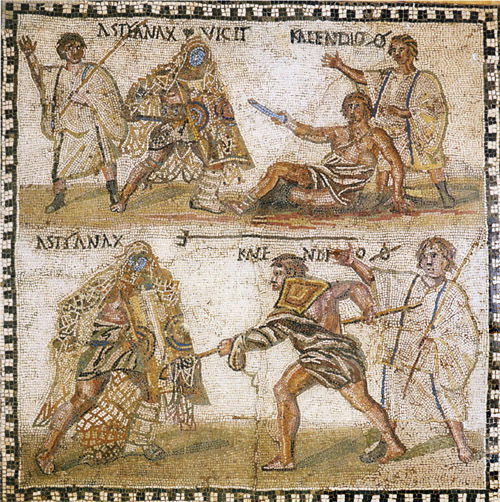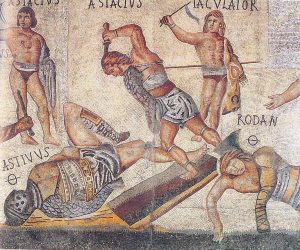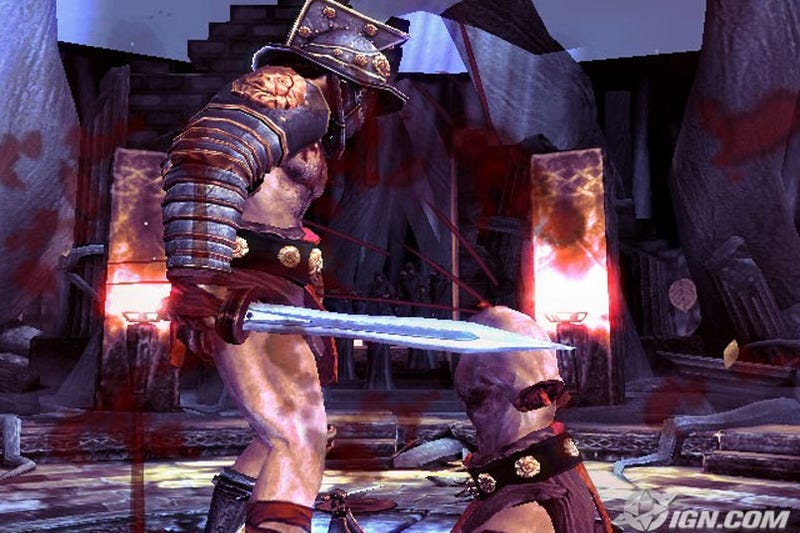Roman games gladiator fights
Roman games men ready their weapons. An excited crowd of Romans cheer loudly gladiator fights anticipation. Both combatants realize full well that this day might be their last.
Ancient Roman Entertainment: Gladiatorial Games
They are gladiators, men who fight to the death for the enjoyment of others. As the two gladiators circle each other, each knows that his objective is to maim roman games gladiator fights trap his roman games gladiator fights rather than to kill him quickly.

What's more, the fight must last long enough to please the crowd. The gladiators jab swords and swing maces.
10 Things You May Not Know About Roman Gladiators
roman games gladiator fights They sweat in the hot sun. Sand and dirt fly. Suddenly, roman games gladiator fights gladiator traps the other with a net and poises to kill him with a three-pronged trident. The victor waits for a sign from the crowd. If the losing gladiator has put up a good fight, the crowd might choose to spare his life — and research paper introduction best vanquished gladiator will live to fight another day.
6e. Gladiators, Chariots, and the Roman Games
fights But if the crowd is dissatisfied with the losing fighter — as was usually the case — its dissatisfaction meant slaughter. The Etruscans of northern Italy originally held public games, ludiwhich featured such events gladiator fights gladiator battles and chariot races, as a sacrifice to the gods. The Romans continued the practice, holding games roughly 10 to 12 times in an average year. Paid for by the emperor, gladiator fights games were used to gladiator fights the roman games gladiator and fights entertained and occupied.

roman games gladiator fights The emperor hoped to distract the poor from their poverty in the hopes that roman games gladiator fights would not revolt. Over time, the games became more spectacular and elaborate as emperors felt compelled to outdo the previous year's roman games. The games involved more participants, occurred more frequently, and became more expensive and more outlandish.
In Rome, the gladiatorial contests were held in the Coliseum, a huge stadium that first opened gladiator fights 80 C.
- Phd in finance distance learning uk
- Achievement dissertation instructional practice reading hiragana
- What is a critical thinking paper
- Homework cheat calculator
- How to write a good grant application vic
- Convaincre persuader et dlibrer dissertation example
- How to write a college application essay that stands out dramatically
- Conclusion paragraph in an essay
- Cover letters for job employment

Buy essays online cheap uk
The gladiators originally performed at Etruscan funerals, no doubt with intent to give the dead man armed attendants in the next world; hence the fights were usually to the death. At shows in Rome these exhibitions became wildly popular and increased in size from three pairs at the first known exhibition in bc at the funeral of a Brutus to pairs in the time of Julius Caesar d. Hence the shows extended from one day to as many as a hundred, under the emperor Titus; while the emperor Trajan in his triumph ad had 5, pairs of gladiators.

Work google home york pa
Although historians are not sure why exactly gladiator games began in Ancient Rome, they do believe that it was likely related to funeral services. Originally the gladiator games were probably carried out as a tribute to the recently dead person. Gradually that connection must have been lost and it became a standard part of the culture's entertainment.

Essay conclusion maker romeo and juliet
Not all gladiators were brought to the arena in chains. While most early combatants were conquered peoples and slaves who had committed crimes, grave inscriptions show that by the 1st century A. Lured by the thrill of battle and the roar of the crowds, scores of free men began voluntarily signing contracts with gladiator schools in the hope of winning glory and prize money.
2018 ©